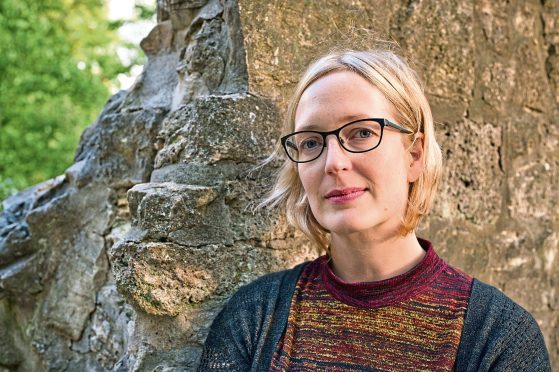
Glasgow-based author Inga Vesper, 38, had written six novels before her ’50s California-set debut The Long, Long Afternoon was finally published and lauded as “a triumph”.
This Wild, Wild Country is the Germany-born writer’s follow-up. Another murder mystery laced with secrets, lies and betrayal, it is also set in the US, this time at “Boldville” in the foothills of New Mexico’s Gila Mountains.
Joanna Riley is the ex-cop looking for somewhere to hide when a young man is found dead in a commune nearby and she suspects a cover-up. Before long, she and young Glitter, a disaffected hippie, are plunged into a mystery that leads them to the unexplained disappearance of Glitter’s grandmother Cornelia 40 years before.
Vesper tells P.S two unrelated subjects – hippies and lost gold mines – merged to provide the inspiration for her latest offering. She explains: “I have always been interested in the hippy movement. It did achieve a lot although we don’t really talk about the things hippies introduced into society like mindfulness and self-care or the importance of realising your dreams and that aspirations don’t have to be to earn a lot of money and have a big house.
“The fact that women can have liberated sex lives and can talk about these things openly is down to the hippy movement. So I always wanted to write about them.”
She learned in a podcast that the US had many gold mines that were subsequently lost. “How do you lose a goldmine?” she laughs. “Apparently, in the 1880s, people would come out of the mountains with a nugget of gold and forgot how to get back. Or, they were either killed or died from illness before they could go back. A whole rumour industry grew up around their lost mines, with people trying to find them. That fascinated me and the two things came together.”
She admits with a smile that the first draft “was chaos”. Vesper said: “I was trying to top The Long, Long, Afternoon. I thought it needed more crime, more history but it was far too much of everything. My editor said we needed to focus it down. So I did that and submitted the final draft this February. It took me just over 18 months.”
The result is a stunningly atmospheric and gripping read. Now Vesper – also a science editor – is working on her third novel, set in Germany in 1946, just after the Second World War. Another murder mystery, it courageously explores the German psyche in the wake of holocaust revelations.
“I was fascinated by what that time was like, when you knew that everyone must have been guilty and nobody wanted to process what had just happened,” she says.
Moving to Glasgow in March last year afforded her the perfect place to write. Vesper, who had previously been based in London, reveals: “During lockdown I couldn’t go into the office, so I thought, ‘now is the time to go somewhere that you really want to be.
“The place I have always loved the most in the world is Scotland. I came here with my parents when I was 14 and it was the best holiday I had ever been on in my life.
“I had spent one night in Glasgow and loved it. So I looked for apartments there and the first one I saw was perfect. It is such a friendly, lovely city. It’s the best decision I’ve made in life. It was a bit like coming home.”
Inga Vesper This Wild, Wild Country, Manilla Press, £14.99

Enjoy the convenience of having The Sunday Post delivered as a digital ePaper straight to your smartphone, tablet or computer.
Subscribe for only £5.49 a month and enjoy all the benefits of the printed paper as a digital replica.
Subscribe